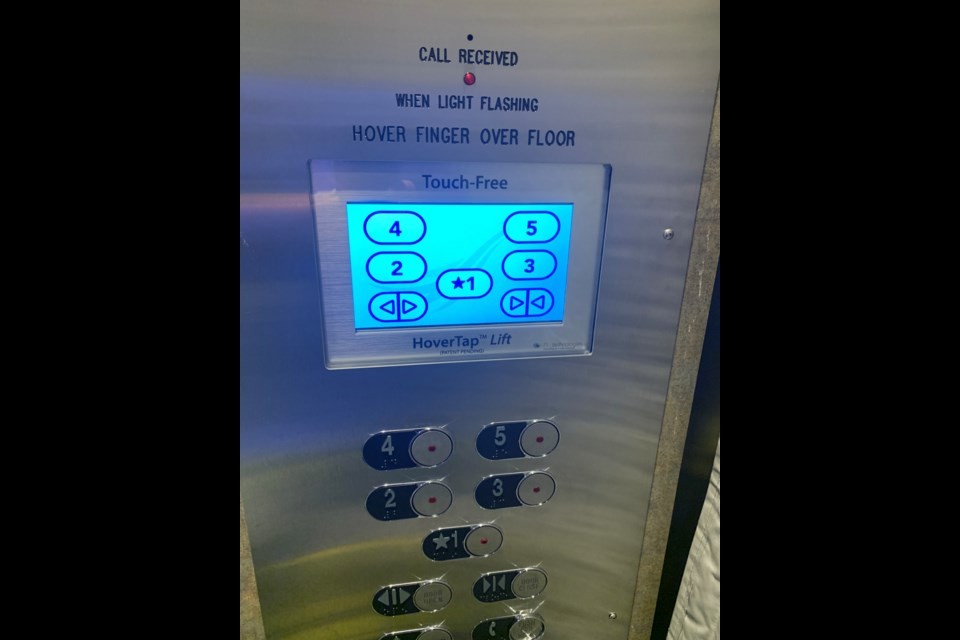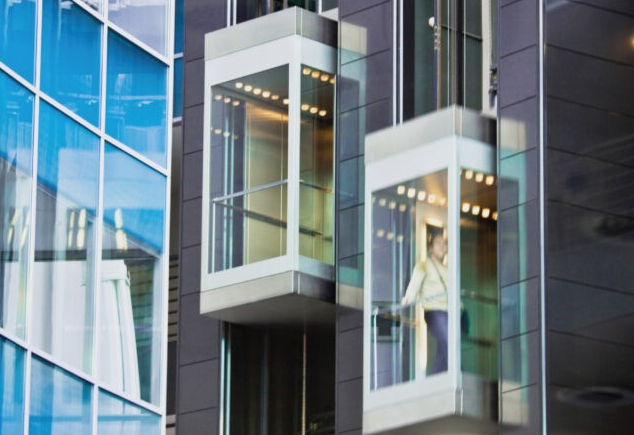
New tech helps provide safer environment in buildings

A new touchless elevator screen has been installed in Richmond’s annex building next to city hall.City of Richmond
Entering an elevator in one of City of Richmond’s buildings may feel like something out of a sci-fi movie.
Richmond’s first touchless keypad was installed in one of the elevators at the city’s annex building, west of Richmond City Hall, in late-October.
In order to get to the desired floor, a person simply approaches the elevator button panel with their finger above the specific floor number on an LCD screen and tap the air approximately an inch away from the screen.
The system, called HoverTap Lift, was created by NZ Technologies, in collaboration with Dupar Controls, a Canadian manufacturer specializing in elevator fixtures and panels.
Nima Ziraknajad, founder and CEO of NZ Technologies, said the system is an “add-on” to the original elevator and didn’t require any other changes.
“It’s like someone is touching the buttons behind the screen for you, and this eliminates any contact with the panel in the elevator,” said Ziraknajad.
According to city spokesperson Clay Adams, Richmond agreed to participate in the pilot project of the touchless elevator system to help provide a safer environment for those in the building.
“We chose to take part in the pilot as the city is always looking for new technology that enhances safety by reducing physical contact through concepts such as touch screens,” said Adams. “This is particularly important given the ongoing pandemic.”
He added that most of the cost for the technology was covered by the manufacturer.
While NZ Technologies had installed its system at Ronald Mcdonald’s House first, it was only a prototype. The system that is being used in Richmond’s annex building is the official final product.
Ziraknajad told the Richmond News that their mission is to provide a safe environment for everybody, which coincided with the City of Richmond’s concerns during the pandemic.
“Our mission is to provide a safe environment for everybody to be able to interact and use high-touch surfaces safely and prevent the spread of transmissible diseases, not just because of COVID-19,” said Ziraknajad.
The system, he added, is useful for buildings and places that have “high in and out pedestrian traffic” such as commercial and residential buildings, airports, shopping malls and even hospitals.
“It’s about the safety of the occupants of a building and to allow everyone to return to work during a difficult time.”
Reported by: Valerie Leung



